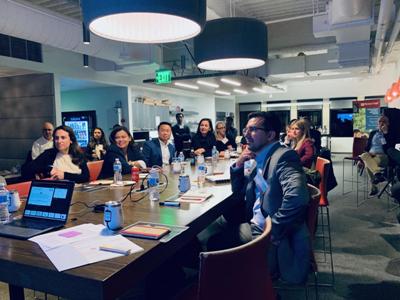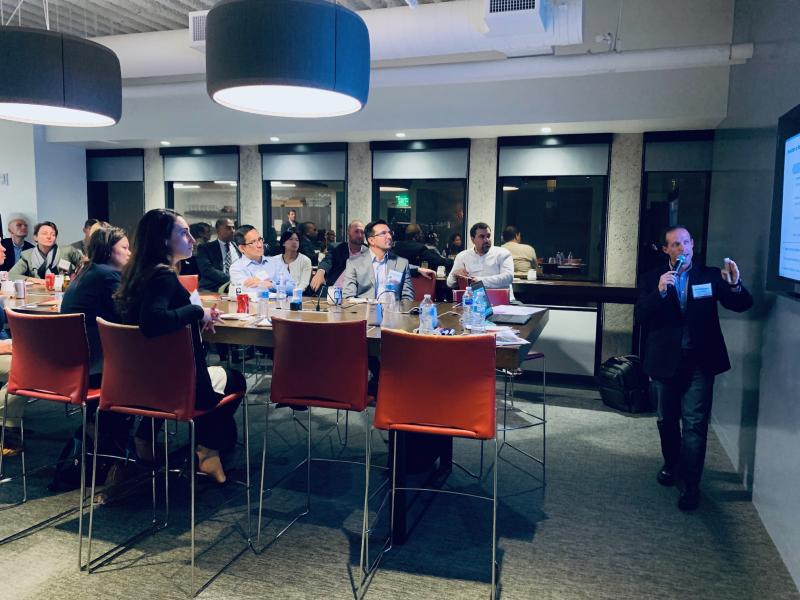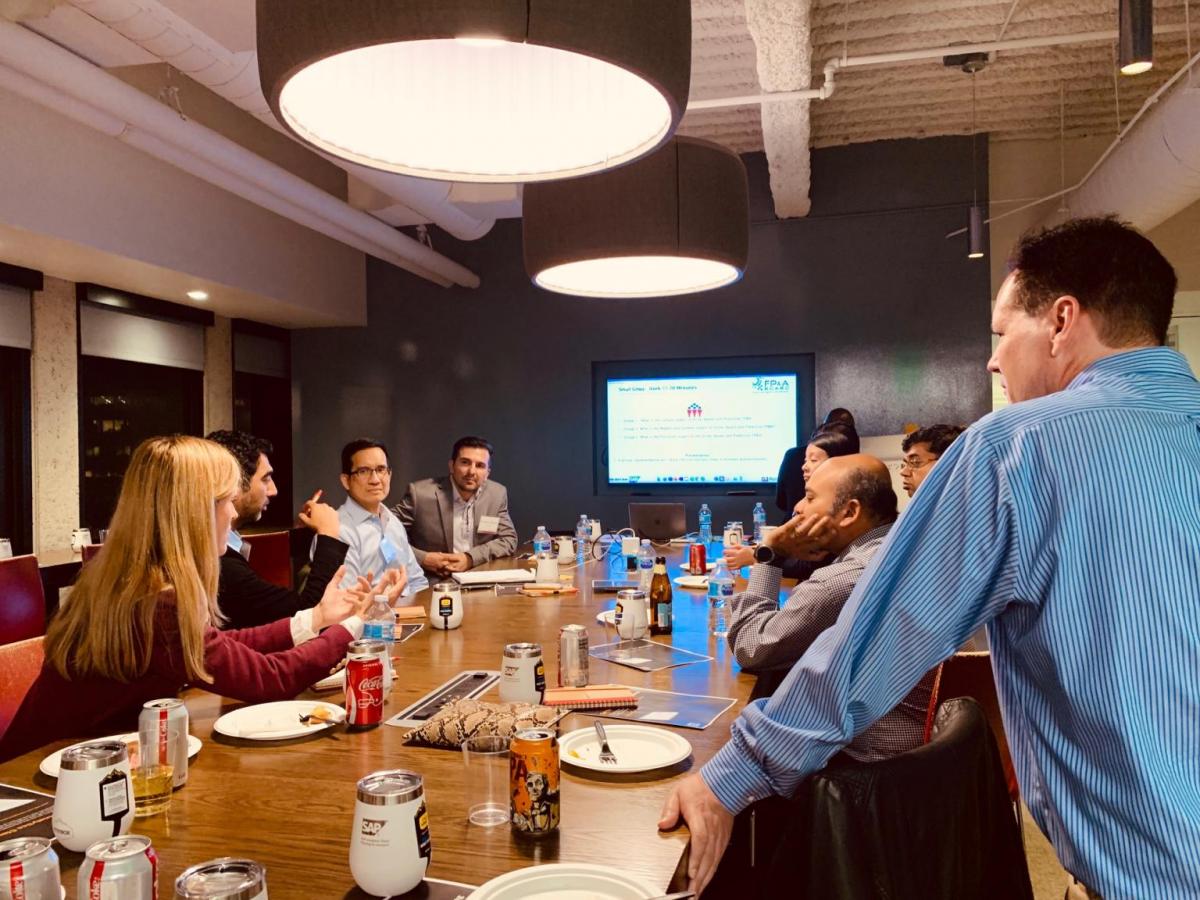 Earlier this month I attended the fourth FP&A Board event in San Francisco focused on trends in driver-based and predictive FP&A. The meeting was sponsored by SAP and Robert Half.
Earlier this month I attended the fourth FP&A Board event in San Francisco focused on trends in driver-based and predictive FP&A. The meeting was sponsored by SAP and Robert Half.
Finance professionals from an array of industries across the Bay Area attended to learn about this timely and important topic. As at past FP&A Board events, attendees shared inspiring insights and engaged in lively discussion while forging valuable new connections with fellow finance professionals.
Following are the key takeaways and highlights from the event.
Introduction to Predictive and Driver-Based FP&A
The presentation kicked off with a level-setting discussion to define predictive FP&A and gauge implementation across the representative organizations in attendance. As Finance organizations become more advanced, they move from providing descriptive analytics (“what happened”) and diagnostic analytics (“why did it happen”), to the ability to provide predictive (“what will happen”) and prescriptive (“what can we do about it”) proactive models. As a financial organization advances in this way, it evolves from analyzing past information through hindsight, to predicting and preparing for the future with advanced levels of foresight.
In a driver-based FP&A model, a driver is defined as any operational cause that produces a financial effect. Drivers can be internal (such as workforce engagement or production capacity), or external (such as global exchange rates or annual GDP). Driver based modeling is about identifying those effects and leveraging them to drive both enhanced analytics and financial outputs (i.e. ROA/ROE). Key drivers are those few factors that can explain a disproportionately large percentage of outputs.
Driver-based FP&A systems are powerful because they have the power to maximize flexibility, financial accuracy, and resource efficiency. The presentation touched on some successful examples of advanced predictive financial systems at large international corporations and how they are changing their corporate impact.
There were a number of group polls conducted throughout the event, baselining the degree to which the participants’ organizations currently use advanced driver-based and predictive FP&A tools. All but four participants said their finance groups used a partially driver-based model, and approximately six people reported their companies used some kind of predictive analytics to drive financial modeling. Those attendees described the predictive tools they are currently using including machine learning tools leveraging historical in-house company data, artificial intelligence to transcribe sales calls combined with other customer analytics to predict sales outcomes, and a driver based model leveraging insights around seasonality to predict customer buying habits.
Clearly there was both awareness and early implementation of some advanced financial models, but to date, only a minority of representative companies have achieved full adoption.
Case Study
Next, David Dubovsky of Roche Pharmaceuticals led a case study presentation on the use of event-driven planning at his organization. Roche is one of the world’s largest pharma companies with a pipeline of over 70 drug development programs and operating profit of more than $20B annually. Their finance function recently moved to an event-driven forecasting model whereby a forecast exercise is triggered by the occurrence of a pre-defined “event,” as opposed to occurring on a set schedule. An “event” can be any major internal or external occurrence which has a major financial impact on the program or company.

The need for a new forecasting model was driven by a combination of Roche’s large, decentralized model, growing complexity within the regulatory environment, and the pace of change with regards to both internal scientific discovery and global market conditions. With the adoption of an event-driven planning model, Roche was able to move from constantly forecasting all drug programs on a preset annual timeline, to a fit-for-purpose model which requires forecasting only when triggered by an event impacting financial outputs.
This transition has been successful largely due to Roche’s support of organization-wide adoption of the event driven planning model, with all divisions participating. The business now has the tools and means to focus on future resource allocations and project planning rather than spending timing reviewing historical financials and events. The need for early senior leader alignment, a properly trained finance team, and the right system landscape to support the transition were all highlighted as the most important lessons learned.
Break-Out Discussions: Critical Aspects of Driver-Based and Predictive FP&A

For the final portion of the event, participants broke into smaller groups to discuss various aspects of driver-based and predictive FP&A in order to gain a better understanding of both the benefits and challenges of implementation. Below are some highlights from those discussions.
Cultural Considerations:
- Importance of minimizing resistance to adoption by providing training and general reassurance to analysts and middle managers
- Benefits of hiring resources who have used similar types of systems/models
- Importance of branding – How will you “sell” this to your team? Focus on communicating the benefits and dispelling myths especially around job security
- Need for whole business buy-in in an already innovative organization
- Focus on fostering comfort amongst leaders and sponsors
- Align incentives by providing recognition and rewards for successful implementation and adoption
- Open communication is a critical element throughout
Models and Systems:
- Benefits of using an event-driven model as detailed in the case study
- Importance of both resource investment and data science
- Don’t change everything at once; instead take a phased approach
- Stay open-minded – What you think are the key drivers are not necessarily the case
- The outputs and reports will also change, not just the systems
- Let the old processes become obsolete as they get replaced one at a time
Processes:
- Spend time identifying the best drivers and include prioritization rankings
- Determine who owns decisions around analysis and interpretations
- Alignment across organization is critical
- Need for buy-in across organization on both models and drivers
- FP&A must know all business operations in order to understand the drivers and build models effectively
- Every new model implementation needs a champion. Don’t start project without one
- Importance of determining use cases
- Create a process for trusting data (business inputs), especially when outcomes don’t align with expectations
- Commitment to invest in the new model/process
The event concluded with an extended networking session, giving attendees and organizers the chance to personally connect and delve into some of the most salient topics of the evening.
In summary, I found this FP&A Board event to be an extremely valuable professional event, bringing together not only insights on the latest advanced financial models and technologies but also a diverse and high-quality group of FP&A leaders dedicated to evolving their organizations and their field.



